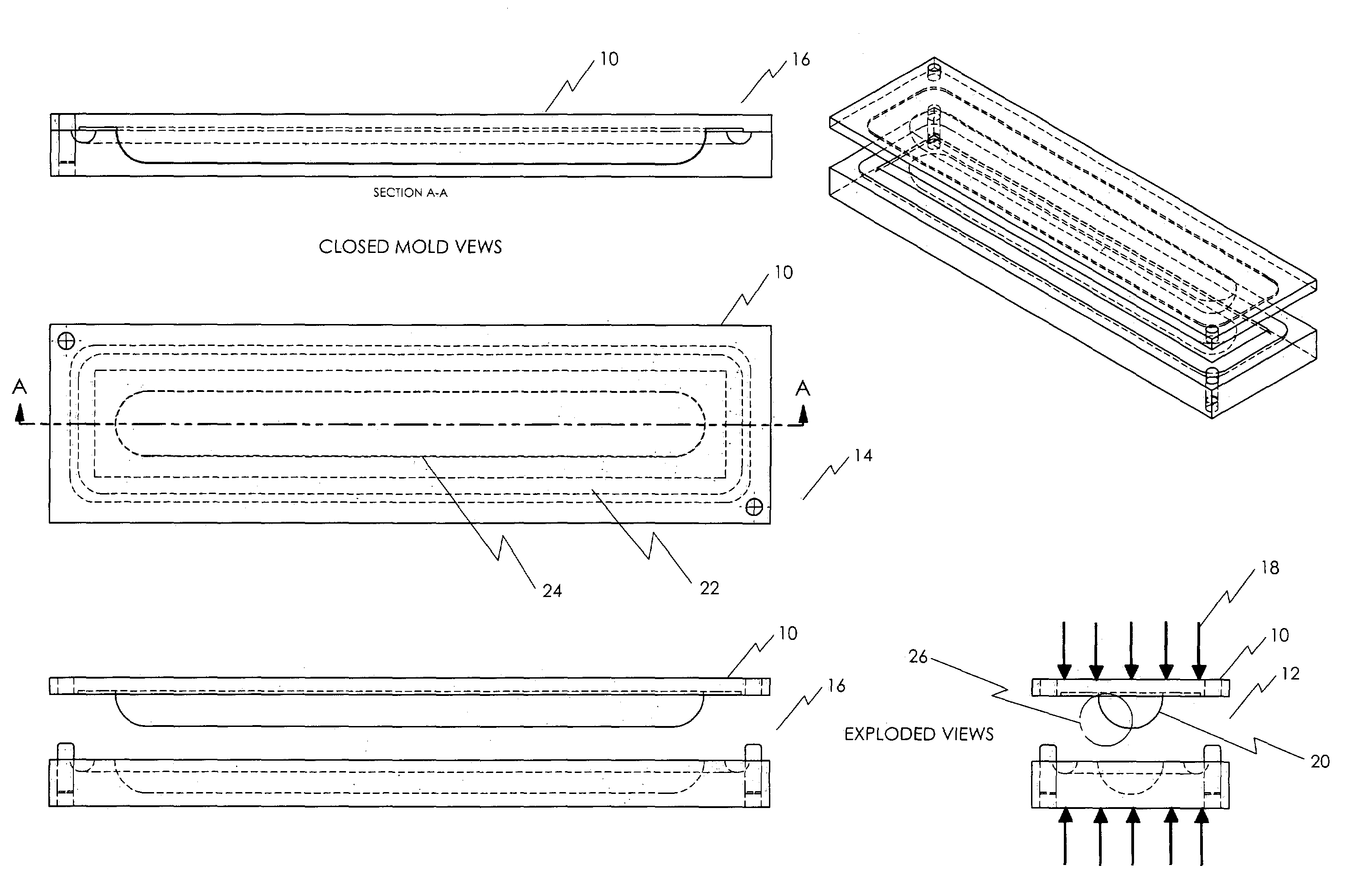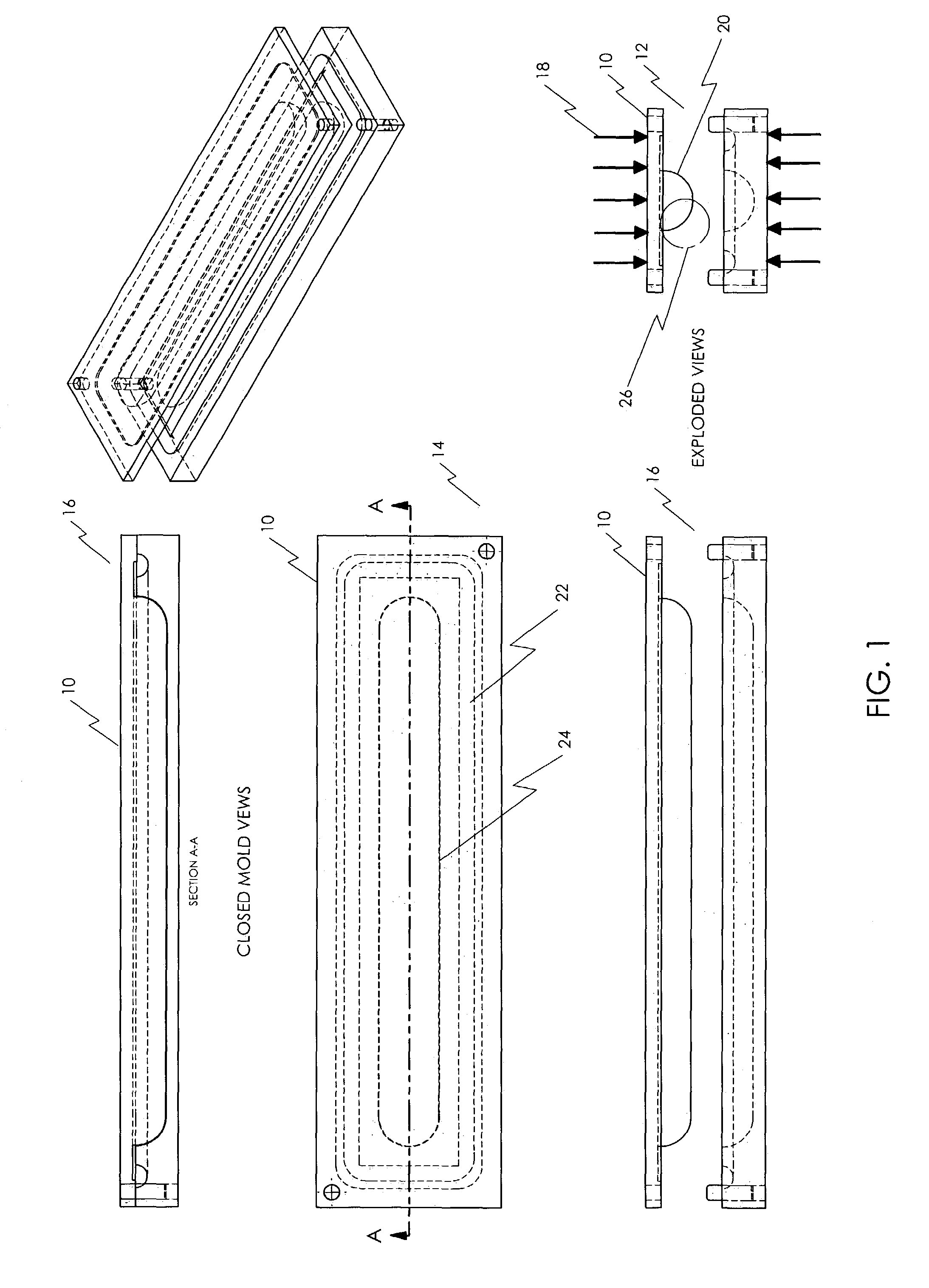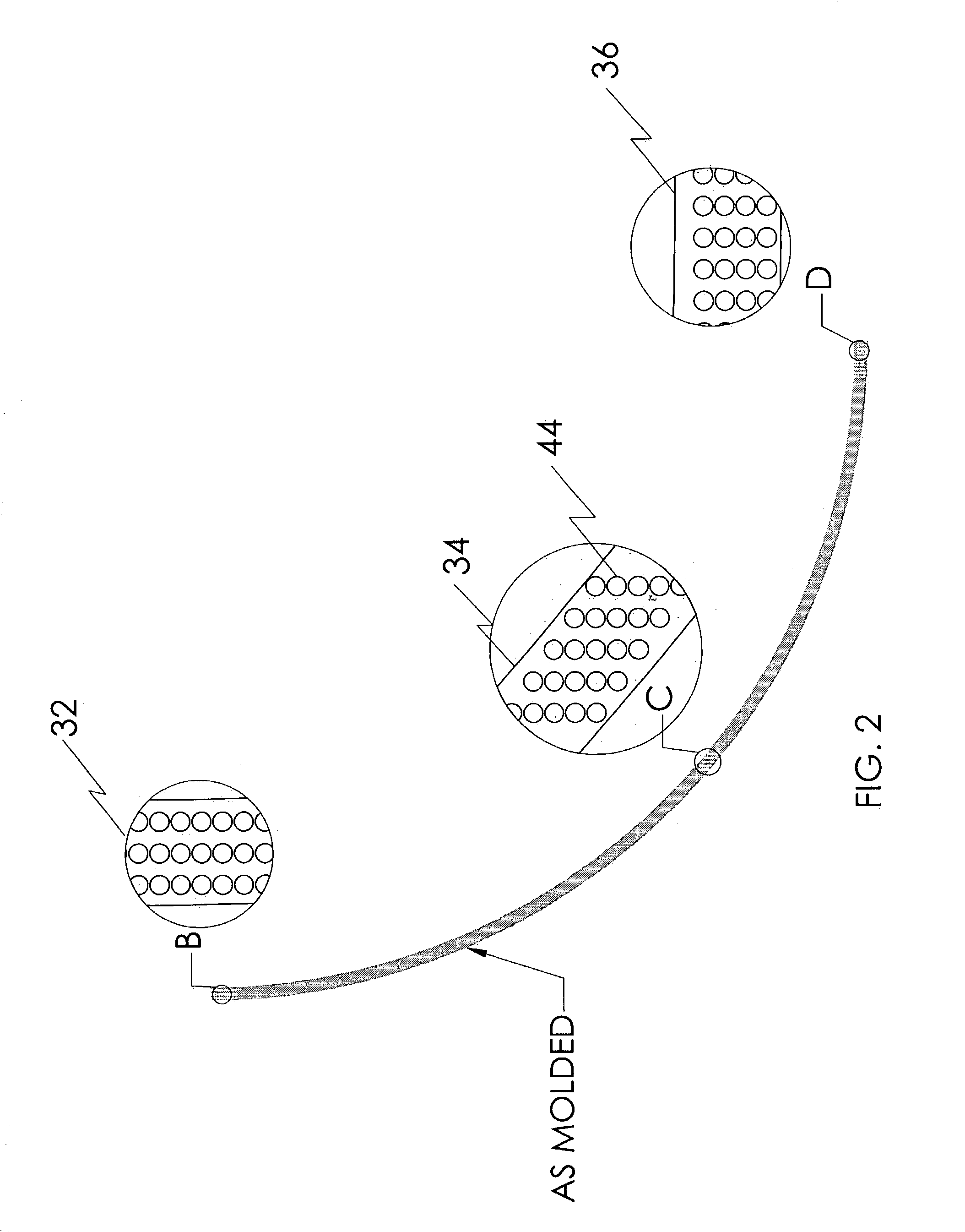Composite material for a sensor for measuring shear forces
a technology of shear force and composite material, which is applied in the field of composite sheet material, can solve the problems of not being able to accurately measure shear uniformly, no product has been successfully engineered to replace the shear force sensor naturally found in our skin, and each of these sensors has its own limitations
- Summary
- Abstract
- Description
- Claims
- Application Information
AI Technical Summary
Benefits of technology
Problems solved by technology
Method used
Image
Examples
Embodiment Construction
[0024]The present invention is related to a composite sheet material, a method of producing this material, and the application of this material as a sensor for monitoring and measuring shear forces (or lateral translation).
[0025]The sensors of the present invention are preferably capable of simultaneously measure both normal and shear forces applied to the sensor. As used in this application, this further includes sensors which are capable of producing signals capable of differentiating both types of forces or combinations thereof. Preferably, the sensor of the present invention is capable to determining the three directional components of a force applied to the sensor. The sensors of the present invention are further preferably statically responsive, and more preferably statically responsive to shear forces. This means when a force, applied to the sensor, is not removed (kept static), the sensor is still responsive and puts out a signal to represent such a force.
[0026]In one embodi...
PUM
| Property | Measurement | Unit |
|---|---|---|
| elongation | aaaaa | aaaaa |
| angles | aaaaa | aaaaa |
| angles | aaaaa | aaaaa |
Abstract
Description
Claims
Application Information
 Login to View More
Login to View More - R&D
- Intellectual Property
- Life Sciences
- Materials
- Tech Scout
- Unparalleled Data Quality
- Higher Quality Content
- 60% Fewer Hallucinations
Browse by: Latest US Patents, China's latest patents, Technical Efficacy Thesaurus, Application Domain, Technology Topic, Popular Technical Reports.
© 2025 PatSnap. All rights reserved.Legal|Privacy policy|Modern Slavery Act Transparency Statement|Sitemap|About US| Contact US: help@patsnap.com



